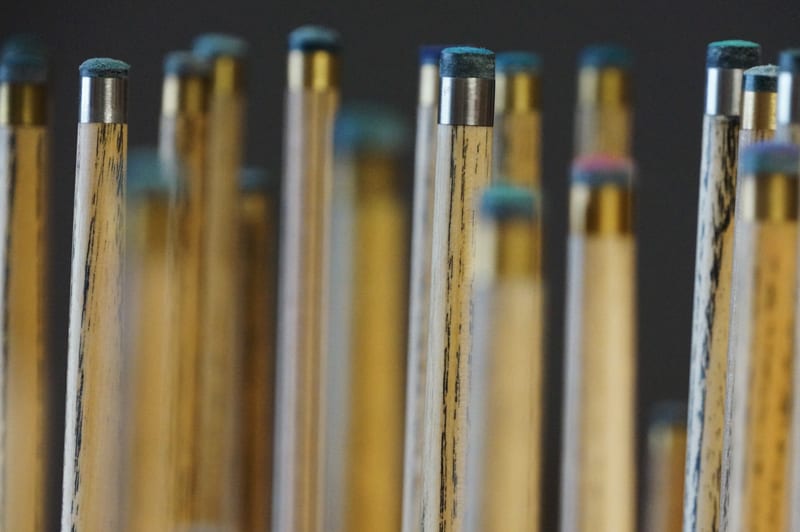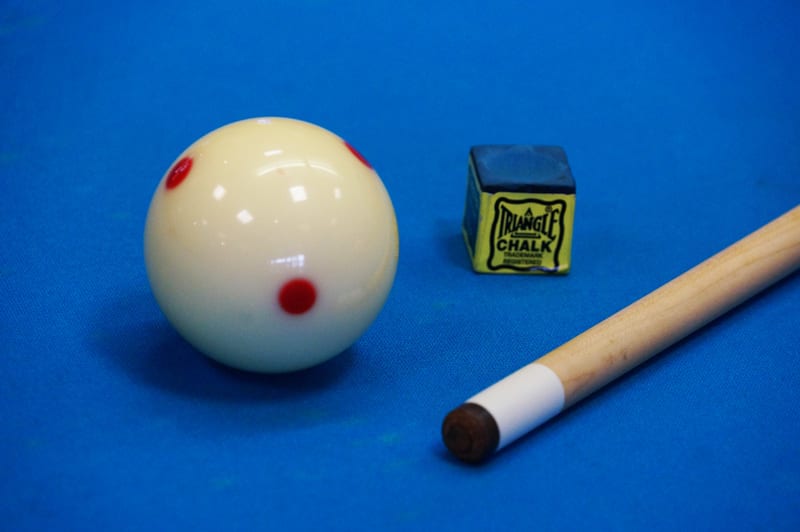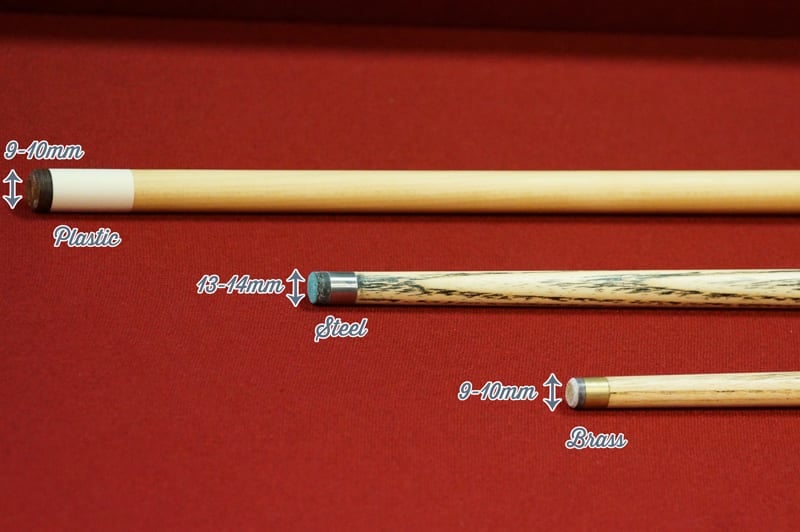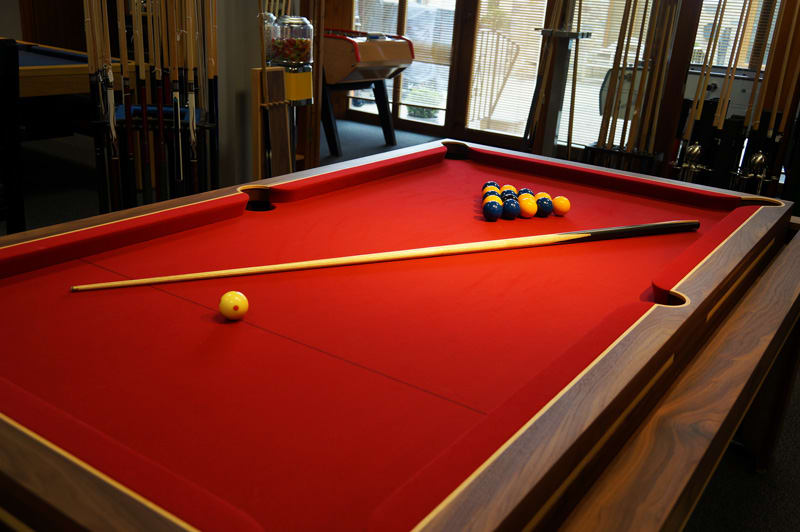There are many different types pool cue available, and they all differ depending on what game you are playing. The most common differences are the width of the cue's tip, what the ring that reinforces the tip (called the ferrule) is made of and the kind of wood the cue is made from.
Buying the right cue for your table is more important than you may think, especially when the cues differ so much.
Why are there different types of Pool or Snooker Cue?
The simple answer why every game has its own cue is because of the size of each game’s cue ball being a unique size and weight. Depending on what game you play, the size of the cue ball can vary dramatically. An English cue ball measures in at 1 7/8 inches, a snooker ball measures in at 2 1/16 inches and an American cue ball measures up at 2 1/4 inches in diameter.

These ball sizes and their respective weights are what require cues to be built differently depending on what game you play. Each type of cue gives the player the optimum amount of control for the game it’s designed for. After all, imagine how difficult it would be to control a large American cue ball with the small tip found on an English cue and vice versa.
What is an English Pool Cue Made Of?
An English pool cue is normally made out of Ash wood, which gives English cues a noticeable grain. The tip of the cue is made of a small ferrule of brass for added strength, and a coarse leather tip for grip. English pool cues tend to be the thinnest bodied cue of all the types with the smallest tip, normally measuring about 8-9mm wide.

What is a Snooker Cue Made Of?
A Snooker cue is constructed using ash wood, much like an English cue. The tip of a Snooker cue is a coarse 9-10mm leather tip to accommodate the size of the cue ball. The ferrule on a snooker cue also tends to be made of stainless steel for increased strength.

What is an American Pool Cue Made Of?
An American pool cue is usually made out of a maple wood, that results in the cue having a light colour. On the tip of the cue is a coarse 13-14mm leather tip, supported a thick plastic ferrule that gives the cue shock absorbing qualities - ideal for striking the larger, heavier American cue ball.

Common Cue Features

Whilst there are a number of differences between each of these cues, there are quite a few similarities too.
Firstly is the tip itself. Each cue will tend to use a leather tip that is deliberately coarse to the touch. This rough tip is purposely rough to allow chalk to adhere to the tip well (without a rough edge, the chalk would simply slide off). You may find that certain cues use different tips depending on their function. For example an American jump cue will use a phenolic resin tip for applying more force to the cue ball on jump shots.
The cue itself in many cases will use a segmented design too, usually being comprised of two pieces that can be separated by unscrewing for the sake of easier storage and transportation. Some cues can even come apart in three different places, which allows for further customisation (such as using different butts for certain shots).
The Importance of Using the Right Cue

As you can probably tell, each type of cue is designed and built for a specific game. Using the incorrect cue could have one of two outcomes: Loss of control whilst playing, or potentially damage to the cue itself. This is especially true if using the smaller and thinner English cues on the large and heavy 2 1/4 inch American pool balls.
These are all the basic differences between the three different types of cues, but there are plenty more individual cues that will have their own sets of features and designs. In fact, we currently hold over 200 different cues in stock in our Bristol showrooms, so you'll be surprised at just how different some of the cues can be. If you would like to get any more information or advice on the type of cue you should get, then give our team at the showroom a call on 0800 622 6464 or 01454 413 636
